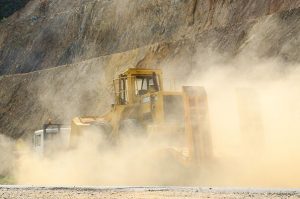In an effort to create more uniformity for the enforcement of silica standards, OSHA published an updated instructional inspection procedures for compliance safety and health officers.
The new “playbook” went into effect immediately. Here’s what you need to know:
The June 25 directive details inspection procedures for addressing exposure to respirable crystalline silica among general industry, construction, and maritime. The guidance on how to enforce the silica standard’s requirements include:
- Methods of compliance
- Exposure assessments
- Table 1 tasks and specified exposure control methods
- Housekeeping
- Communication of hazards
- Respiratory protection
- Regulated areas
- Recordkeeping
- Employee information and training
- Medical surveillance
The agency press release states, “The directive also provides clarity on major topics, such as alternative exposure control methods when a construction employer does not fully and properly implement Table 1, variability in sampling, multiemployer situations, and temporary workers.”
Key Takeaways for Employers
The standard still calls for a permissible exposure limit of 50 micrograms per cubic meter of an 8-hour time-weighted average. Under the new guidelines, all general industry and maritime employers must offer medical surveillance to employees who are exposed to the “action level” of 25 micrograms per cubic meter for 30 or more days a year.
Related: The OSHA Silica Standard is About To Get More Strict
This is an update from the previous rule that required medical surveillance be made available to employees who had exposure above the permissible exposure limit for 30 or more days per year.
Employers should review the compliance checklists in Appendix F of the guidance. Each checklist (segmented by construction/general industry/maritime) contains specific step-by-step checkboxes for all topics covered in the inspection procedures. Incorporate these into the safety compliance programs and utilize them to simulate OSHA inspections on your worksites, and take corrective action before the real inspection arrives.
Hydraulic Fracturing Inspection Guidelines For Silica
The guidance also contains a primer on inspections of fracturing or “fracking” operations in Appendix G.
This provides an overview of the general process—along with updated requirements for engineering controls. Hydraulic fracturing operations in the oil and gas industry must comply with the updated requirements by June 23, 2021.
To schedule your mobile silica physical exams & respirator fit testing, complete the form below.
***
About Worksite Medical
In most cases, OSHA requires medical surveillance testing, and at no cost to employees.
Worksite Medical makes that program easier with mobile medical testing.
We conduct on-site respirator fit tests (including N95 masks) and audiometric exams, as well as pulmonary function tests and heavy metal lab work, right on your job site. We also keep accurate, easy-to-access medical records for your convenience. You’ll keep your employees at work, and stay ahead of OSHA inspections.
With Worksite Medical, a mobile medical testing unit — we can bring all the resources of a lab to you. Our certified lab technicians can perform both qualitative and quantitative respirator tests to ensure a perfect fit.
Protect your team and your workplace now with Worksite Medical. Not sure what you need? Try our medical testing wizard here.
Give us a call at 1-844-622-8633, or complete the form below to schedule an on-site visit or to get your free quote!




